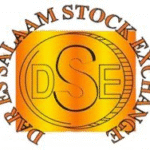About Company
The Dar es Salaam Stock Exchange (DSE) is Tanzania’s principal securities exchange, playing a vital role in the country’s financial sector.
📜 History & Structure
-
Founded: Incorporated on September 19, 1996, under the Capital Markets and Securities Act of 1994.
-
Operations Commenced: April 15, 1998, with TOL Gases Limited as the first listed company.
-
Demutualization: Transitioned to a public limited company on June 29, 2015, and self-listed on July 12, 2016, becoming the third African exchange to do so after Johannesburg and Nairobi.
🏢 Market Overview
-
Location: 14th Floor, Golden Jubilee Towers, Ohio Street, Ilala, Dar es Salaam.
-
Currency: Tanzanian Shilling (TZS).
-
Trading Hours: Monday to Friday, 10:00 AM to 2:00 PM.
-
Regulator: Capital Markets and Securities Authority (CMSA).
-
Memberships: African Securities Exchanges Association and World Federation of Exchanges.
📈 Market Indices
-
Tanzania Share Index (TSI): Tracks domestic company performance.
-
DSE All Share Index (DSEI): Includes all listed companies, both domestic and cross-listed.
-
Sectoral Indices: Include Industrial & Allied (IA) and Banks, Finance & Investment (BI).
📊 Listings & Instruments
-
Listed Companies: As of the latest data, there are 27 listed companies on the DSE.
-
Financial Instruments: Shares, corporate bonds, government bonds, and Real Estate Investment Trusts (REITs).
-
Notable Listings: Tanzania Breweries Limited (TBL), CRDB Bank, NMB Bank, Vodacom Tanzania, and cross-listed entities like Kenya Airways and East African Breweries.
📱 Technological Advancements
-
Mobile Trading Platform: Launched in August 2015 as “Soko la Hisa Kiganjani,” enabling investors to trade via mobile phones, enhancing accessibility for those in remote areas.
📊 Recent Performance (as of May 30, 2025)
-
DSE All Share Index: 2,359.91 points.
-
Tanzania Share Index: 4,996.99 points.
-
Market Capitalization: Approximately TSh19.71 trillion.
-
Daily Turnover: TSh581.8 million.
⚠️ Challenges & Initiatives
-
Liquidity Constraints: The DSE faces challenges with low trading volumes, affecting market liquidity.
-
Public Awareness: Efforts are ongoing to increase public participation and understanding of the stock market.
-
Technological Infrastructure: Continuous improvements are being made to enhance trading systems and accessibility.



Be a First Reviewer